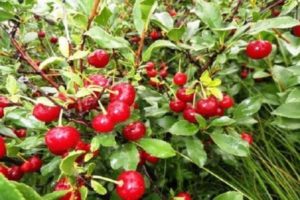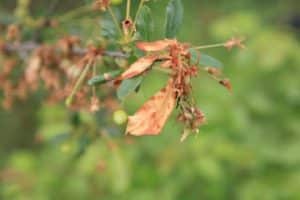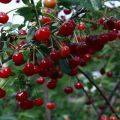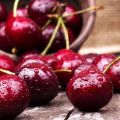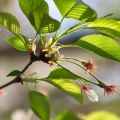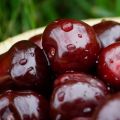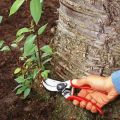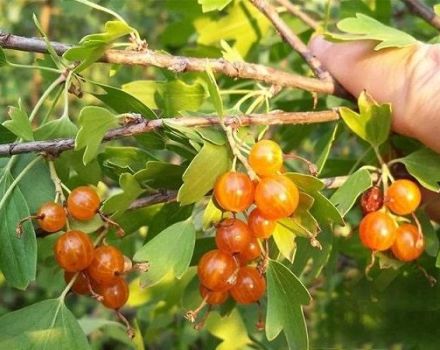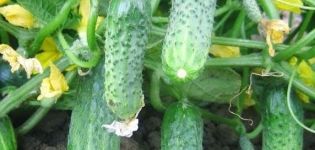The best varieties of self-fertile and undersized cherries for the Moscow region, planting and care
Growing your own berries in the garden is every gardener's dream. But it often happens that the tree does not bear fruit at all. What kind of cherry is suitable for the Moscow region, what qualities trees must have in order to bear fruit in this region. The summer resident asks these questions when he is looking for a suitable cherry variety in nurseries.
Climatic conditions of the region
The Moscow region is characterized as not a very successful region for growing fruit and berry crops. But, nevertheless, thanks to the efforts of breeders, cherry varieties adapted to the climatic characteristics of the region are being developed. Summer residents living in this region can grow their own berries without much effort.
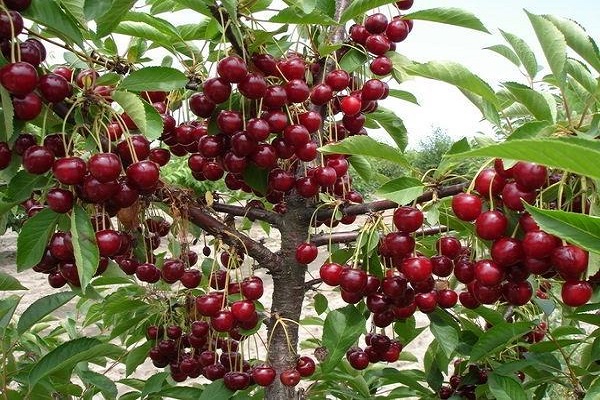
Planting in open ground involves the selection of tree varieties that are not afraid of cold, weather changes and other conditions that are not most favorable for the growth of a young plant.
The climate of the region is characterized as follows:
- Temperature difference. High in summer and low in winter.
- Very coldy. In the cold season, the frost reaches -35 ⁰С.
- Snowless winters. The absence of snow in winter leads to the freezing of unadapted plants.
- Change of weather. Hot days give way to relatively cool ones.
To choose a variety for planting in this region, it is necessary to study well the characteristics and description of the species. Only then make a final decision.

Cherry characteristics for successful growth and fruiting
What qualities a cherry should have in order for its cultivation in the Moscow region to give a positive result:
- Self-fertility. An important quality of plants, since pollination without insects is possible in any weather. Except for the rain, of course. Self-pollinated cherries give a more stable yield, they do not have interruptions in fruiting. This is a big plus for any gardener.
- Low-growing trees freeze less in winter, they can be wrapped. So they calmly overwinter and continue to grow and develop in the spring.
- Winter hardy. This quality is one of the most important, if the cherry does not tolerate low temperatures well, then no yield will cover it. Plants will simply freeze.
- High immunity. The more disease-resistant a tree is, the better. A healthy seedling gives more yield.
- Resistance of buds and flowers to frost. In the spring, during the period of return frosts, a flowering tree can lose its harvest.But if the flowers are resistant to low temperatures, the summer resident should not be afraid of losing the harvest.

When choosing a variety for growing in the Moscow region, all these qualities must be taken into account. Only then is it possible to get the declared yield.
The best cherries for the Moscow region
The list of varieties that are adapted to climatic characteristics will help the summer resident to quickly make a choice. He can only choose from the options offered. After carefully studying the description and comparing with the needs of the family, they make the final choice.
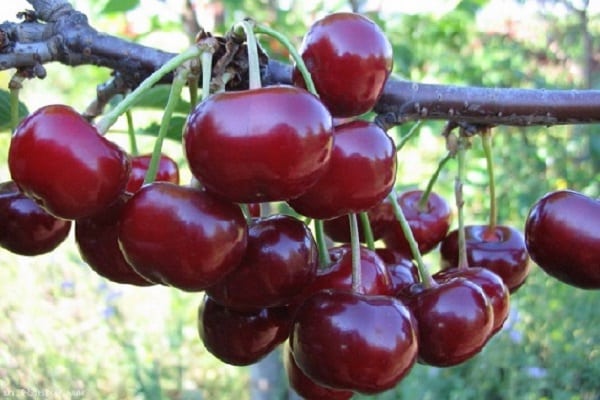
Lyubskaya
Cherries from the people. The variety bred by gardeners has such properties, thanks to which the popularity does not fall even at the present time. The variety has a drawback, the fruits are very sour. But despite this, they continue to grow it on the plots.
The tree is not tall, thanks to this, it is convenient to collect fruits from it. Cherry begins to bear fruit at the age of 4. Gradually increasing, the harvest reaches its peak, and this figure lasts for a long time. Sweet varieties grown on the site are inferior to Lyubskaya by other criteria.
A big plus of the variety is self-fertility, the crop ripens steadily, without interruption.

Apukhtinskaya
This cherry variety ripens late. The tree is not tall, the yield grows every year.
A distinctive feature is that the tree bears fruit for the first time already in the 2nd year after planting.
Cherries are hardy and self-fertile. Taste characteristics distinguish berries from other varieties. They are sour, sometimes they give off bitterness. Thanks to these features, it is used in processing, it adds spice to the dessert.
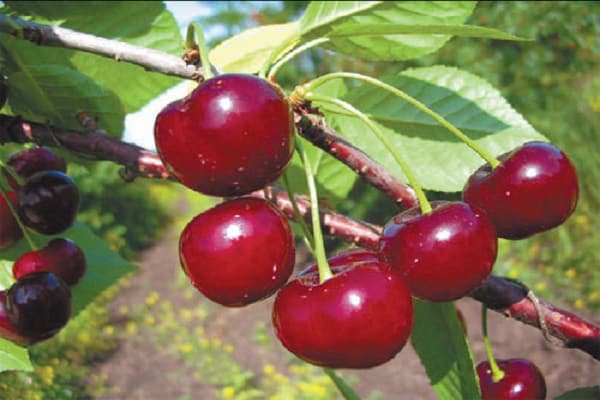
Another feature is the heart-shaped fruit and the dark color of the berries. They ripen in mid-August. The yield per plant is 10 kg of berries.
Subject to all planting and care standards, a stable high yield is ensured for the gardener. The species is considered to be moderately resistant to diseases, but for fidelity, preventive treatments will not interfere.
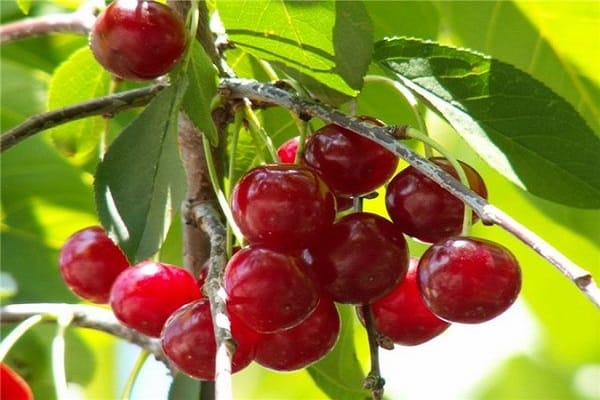
Turgenevskaya
The variety has been known to summer residents for a long time. Its popularity is high. The size of an adult tree is 3 m. Gardeners appreciate the Turgenev cherry for a number of positive qualities:
- large-fruited (6 g);
- winter hardiness;
- high immunity;
- unpretentiousness;
- undemandingness;
- yield and much more.
The berries have a standard taste, they are used for any method of processing, freezing and fresh consumption. The fruits are easily transported without losing their presentation.
Cherry of universal pollination, that is, the tree is partially self-fertile. To increase the yield, it is recommended to plant a number of pollinating varieties. The berries ripen at the same time, this makes it easier for the summer resident, since the entire crop is harvested at a time.

Youth
This cherry grows in the form of a bush and a tree, depending on how it is formed. The size of an adult plant does not exceed 2.5 m. The variety is self-fertile, the first time it begins to bear fruit in the 4th year of life.
The yield from 1 tree is 12 kg of berries. Fruiting Youth cherry 18 years, plus or minus 2 years. The tree has medium resistance to low temperatures. Flower buds withstand light frosts in spring.
The fruits are tasty and healthy, the stone is easily separated. The berry is used for any processing method.
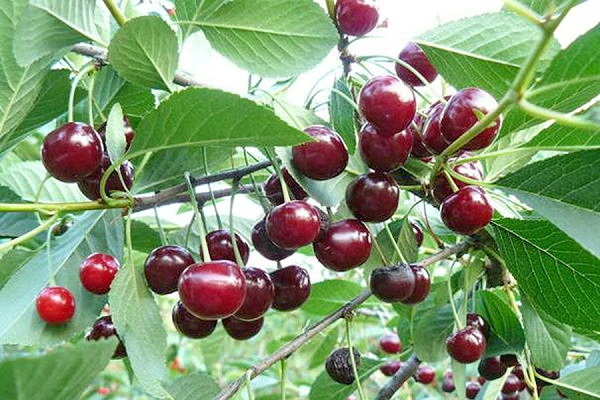
Chocolate girl
The trees of this type of cherry are small, short and compact. The chocolate girl does not need insects for pollination, as she copes with this task perfectly on her own. The fruit has a standard flavor and is easy to pick, as the tree is only 2.5 m tall.
Fruiting begins from the 4th year and lasts 18-20 years. By creating the necessary conditions and fulfilling agrotechnical requirements, gardeners get a stable, high yield of berries. They are used for making wine, juices, preserves, jams and other methods of processing fresh berries.
The sweet and sour taste inherent in many cherry varieties allows them to be consumed fresh. The average yield per plant is 9.5 kg. The maximum volume is 15 kg.
The chocolate girl is unpretentious and undemanding in care. The minimum expenditure of effort and time pays off with kilograms of delicious berries.
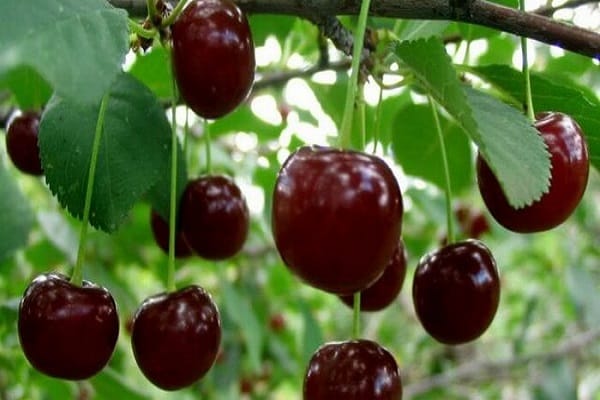
Robin
Reaches a height of 3.5 m. Fruits are formed on last year's branches. The most delicious fresh dessert, and also healthy. The berry weight is small, 4 g, but the taste characteristics are excellent. Thanks to this, cherries are used for all types of preparations for the winter.
An unpretentious plant requires virtually no maintenance. You just need to follow the standard agricultural practices for fruit crops.
The yield reaches 14 kg per tree. If you follow all the rules and requirements of growing, the Robin will not get sick. Carrying out preventive treatments, removing weeds, loosening and timely standardized watering will help to avoid the appearance of pests and some diseases.
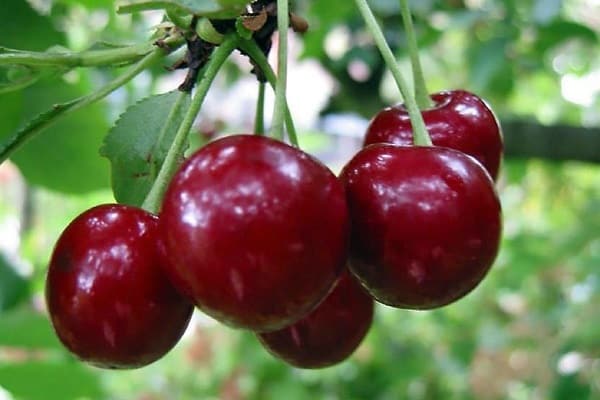
Fairy
The trees are not tall, from 2 m to 3 m. After 3-4 years the cherry will give its first harvest. The fruits are medium, weighing 3.5 g. Their taste is sweetish, there is a characteristic sourness. The tree bears fruit every year, does not take breaks. It is necessary to observe all the subtleties of care and planting, then the plant will show the best results.
The fairy tolerates long cold winters well, besides, she is immune to diseases. Thanks to the positive characteristics and reviews of gardeners, it is in great demand among summer residents. Bush cherry and small, so the harvest is quick and easy.

Silvia
A common type of cherry that is in demand among summer residents. Plant height 3 m. It has positive characteristics and reviews from gardeners and the manufacturer. High winter hardiness, large yield are guaranteed. It is resistant to fungal infections.
Fruits ripen early, they tolerate transportation well over long distances. The taste is sour, for this reason the berries are used for processing and are rarely consumed fresh. The weight of the fruits is only 2 g, but this does not interfere with boiling compotes, jam jams and freezing them for storage for the winter.

Summer residents are advised to wrap cherries for the winter for safety net.
The variety has disadvantages, for some summer residents they are insignificant, but it is still necessary to focus attention:
- weak immunity;
- average yield;
- small fruit.
The cultivation of Silva cherries will not cause difficulties, observing agricultural techniques, a stable harvest volume is obtained, about 12 kg.
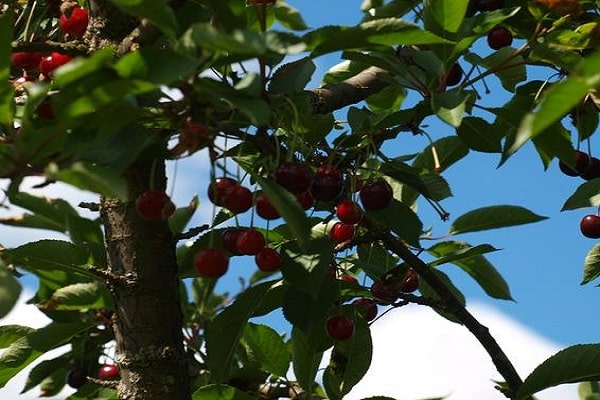
Radonezh
Relatively new varieties often cause concern among summer residents whether it is worth planting trees that have not been tested by time. But Radonezh showed his best side, many experienced gardeners speak positively about him.
The tree grows up to 3.5 m, the crown is dense with powerful shoots. The fruits are medium-sized, weighing up to 5 g. The color of the berries is dark red, the taste characteristics are excellent, characteristic of cherries. It is consumed fresh, used for making juices, preserves, compotes and other types of winter preparations.
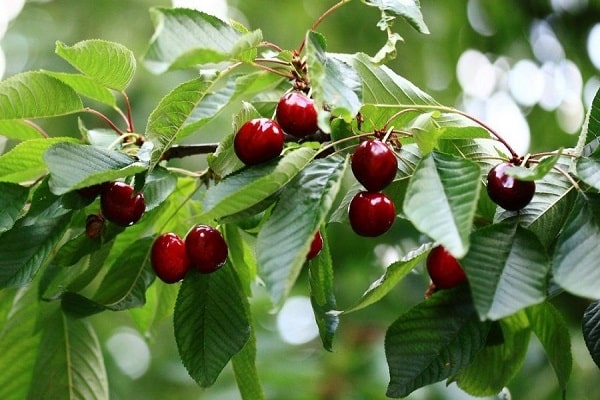
This cherry variety is often used for growing on an industrial scale. The plant is resistant to frost, drought and adverse weather conditions.
Fruit buds of the tree are resistant to spring frosts. They are able to withstand a drop in temperature without losing yield. Radonezh is not dwarf cherryso harvesting is a bit problematic. It is necessary to build special structures, the volume of the harvest is 10 kg per tree. With proper care, rates increase.
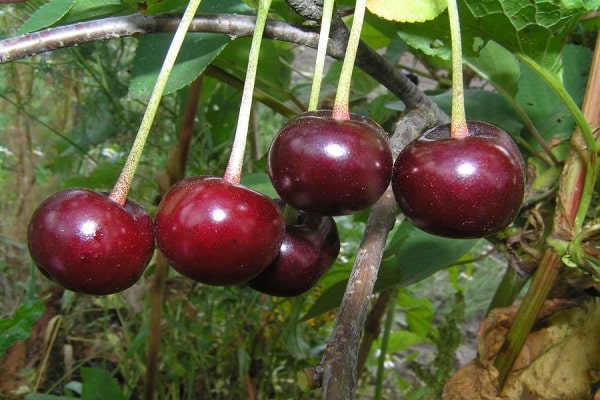
Volochaevka
There will be no particular difficulties during the cultivation of cherries. It is enough to follow standard agricultural techniques, and the tree will delight the owners with a high yield.
The height reaches 3 m.The fruits are large, weighing up to 4.5 g. The taste is ordinary, the juice is rich red. Berries are used for fresh consumption and any method of processing.
The tree resists frost down to -30 ⁰C, if the temperature is lower, the fruit buds do not wake up in the spring.
Fruiting at the tree begins at 4 years of age. The yield is 12 kg per tree. Volochaevka is self-fertile and has high immunity.
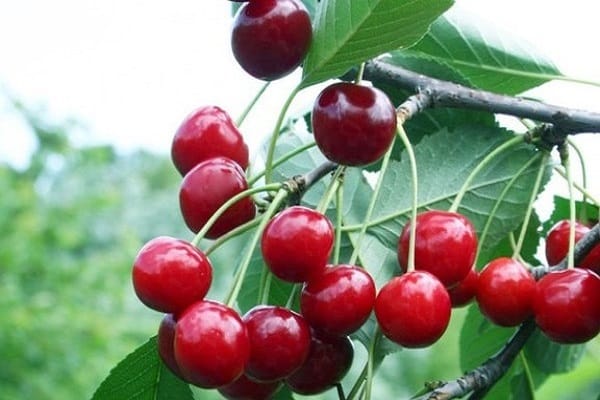
How and when to plant cherries in the suburbs
To grow cherries in the climatic conditions of the Moscow region, you need to comply with certain requirements. They relate to the timing, place and methods of landing. Distance between cherries is 3 m. Low-growing or dwarf species are planted at a distance of 2 m.
Choosing a landing time
Experts recommend doing this in the spring. Before bud break, approximately at the beginning of April. For autumn planting, it is recommended to arrange everything before October. Otherwise, the tree will not take root and freeze in winter.
Among other things, the peculiarities of the seedling itself must be taken into account, some specimens may freeze. It is better not to plant in the fall, but to leave the planting for the spring, the seedling is buried in, well wrapped up and left to winter. In early spring, it can be planted in a permanent place.
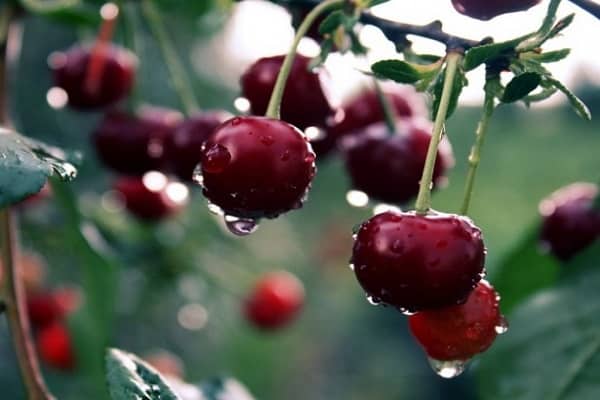
Seat selection
In order for the seedlings to feel good, it is necessary to choose the right place. A well-lit area in the sun will do. Soil composition:
- loamy;
- sandy loam.
Melted water should not stagnate at the landing site. Before planting, the acidity of the site is checked, it must be neutral. Liming is carried out if necessary. It is better not to use the southern slopes for planting, since in winter the tree will freeze there, and in summer it will need a lot of water.
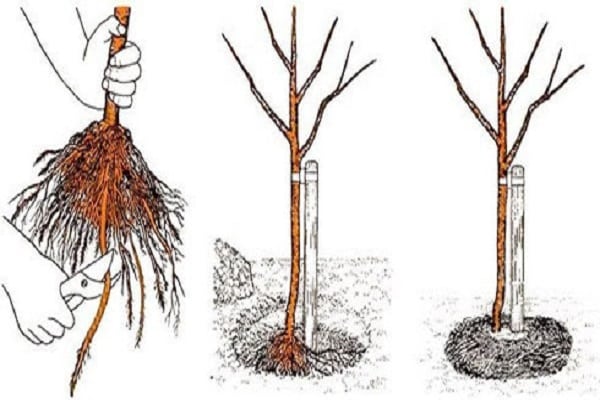
Cherry care rules
To grow a crop, it is necessary to precisely follow the recommendations of experienced summer residents. Fulfillment of standard agronomic requirements allows you to obtain the declared yield from any plant, including cherries.
Watering
The amount of moisture consumed by one tree depends on the variety and age of the plant. The smaller the tree, the more often it needs to be watered. Adult cherries are rarely watered, but abundantly. It is advisable not to allow waterlogging and waterlogging of the soil, as well as drying out.

Top dressing
Even during planting, it is recommended to apply complex mineral fertilizers and organic matter. In the future, as the tree grows, its appearance is monitored; external changes will signal the lack of any substance.
An adult plant is fed with organics once every 2-3 years, and mineral fertilizers are applied 2-3 times per season. Feeding in the autumn and spring requires attention.
Pruning
The formation of the crown depends on the characteristics of the variety. Some trees are pruned in the first year. And some require formation only after a few years.
Don't forget about sanitary pruning. The sooner a deformed or diseased branch is cut down, the less damage it will do to the tree.
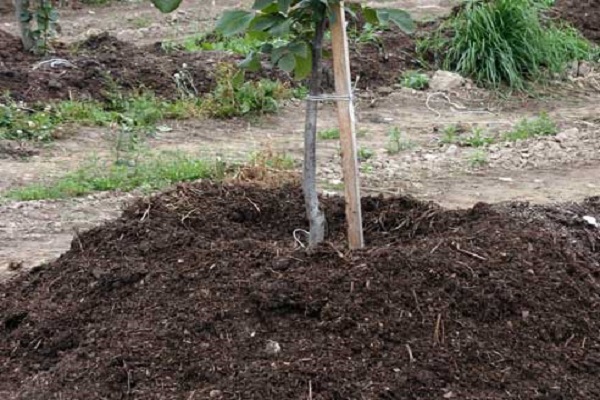
Preparing the tree for winter
The climatic features of the Moscow region provide for additional shelters for fruit trees in the garden. Since autumn, they are fed with complex fertilizers, cut off unnecessary branches, and form a crown.
With the onset of cold weather, the tree is wrapped so that the fruit buds do not freeze out during the winter cold.

Typical diseases and methods of dealing with them
In the Moscow region, the climate is predominantly damp, so cherries often suffer from fungal diseases:
- coccomycosis;
- clasterosporium disease;
- moniliosis.
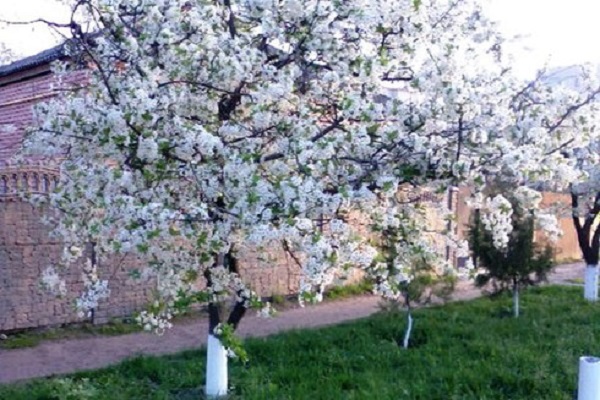
It is better to choose varieties that are not susceptible to these diseases. But even these types need to be processed for safety net. Use chemicals or folk remedies, depending on the stage of the growing season. In spring and late autumn, they are boldly treated with chemistry.
Folk remedies are used during flowering and fruiting of cherries.
Growing cherries in the Moscow region is possible, it is recommended to choose the right variety and take care of it.

